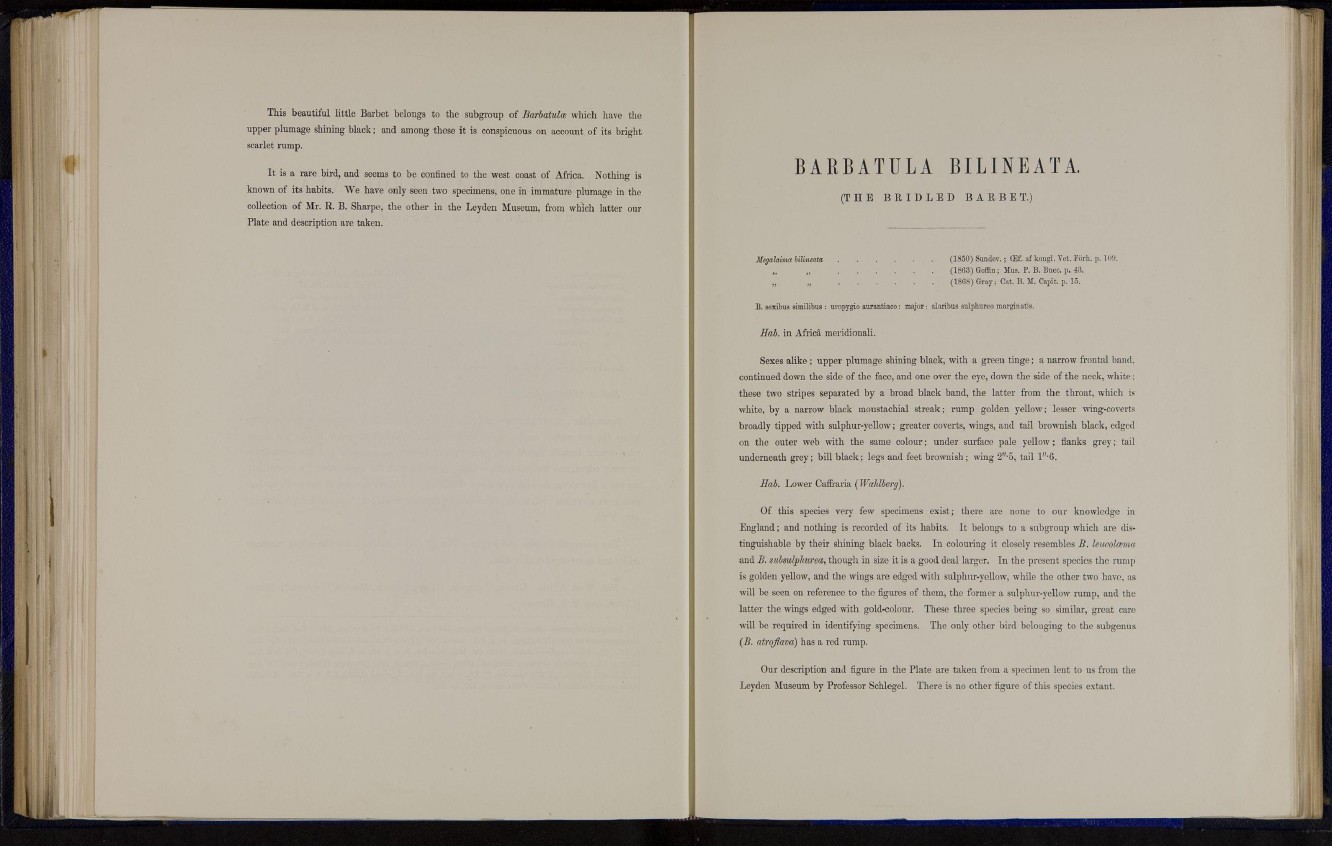
Tins beautiful little Barbet belongs to the subgroup of Barbatulm which have the
upper plumage shining black; and among these it is conspicuous on account of its bright
scarlet rump.
I t is a rare bird, and seems to be confined to the west coast of Africa. Nothing is
known of its habits. We have only seen two specimens, one in immature plumage in the
collection of Mr. R. B. Sharpe, the other in the I/jyden Museum, from which latter our
Plate and description are taken.
B A R B A T U L A B I L I N E A TA
( T H E B R I D L E D B A R B E T .)
Megalaima bilineata (1850) Sundev.; (Ef. af kongl. Vet. Forh. p. 109.
(1863) Goffln; Mus. P. B. Buec. p. 4:5.
(1868) Gray; Cat. B. M. Capit. p. 15.
B. sexibus similibus : uropygio aurantiaco: major: alaribus sulphureo marginatis.
Hdb. in Africa meridionali.
Sexes alike ; upper plumage shining black, with a green tinge; a narrow frontal band,
continued down the side of the face, and one over the eye, down the side of the neck, white;
these two stripes separated by a broad black band, the latter from the throat, which is
white, by a narrow black moustachial streak; rump golden yellow; lesser wing-coverts
broadly tipped with sulphur-yellow; greater coverts, wings, and tail brownish black, edged
on the outer web with the same colour; under surface pale yellow; flanks grey; tail
underneath grey; bill black; legs and feet brownish; wing 2"'5, tail l"-6.
Hob. Lower Caffraria (Wahlberg).
Of this species very few specimens exist; there are none to our knowledge in
England; and nothing is recorded of its habits. It belongs to a subgroup which are distinguishable
by their shining black backs. In colouring it closely resembles B. leucolccma
and B. subsulphurea, though in size it is a good deal larger. In the present species the rump
is golden yeUow, and the wings are edged with sulphur-yellow, while the other two have, as
will be seen on reference to the figures of them, the former a sulphur-yellow rump, and the
latter the wings edged with gold-colour. These three species being so similar, great care
will be required in identifying specimens. The only other bird belonging to the subgenus
(B. atroflava) has a red rump.
Our description and figure in the Plate are taken from a specimen lent to us from the
Leyden Museum by Professor Schlegel. There is no other figure of this species extant.